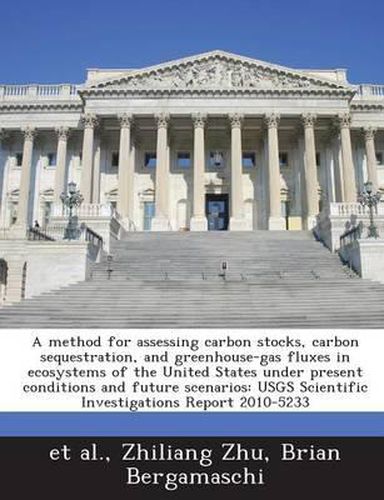Readings Newsletter
Become a Readings Member to make your shopping experience even easier.
Sign in or sign up for free!
You’re not far away from qualifying for FREE standard shipping within Australia
You’ve qualified for FREE standard shipping within Australia
The cart is loading…






The Energy Independence and Security Act of 2007 (EISA), Section 712, mandates the U.S. Department of the Interior to develop a methodology and conduct an assessment of the Nation’s ecosystems, focusing on carbon stocks, carbon sequestration, and emissions of three greenhouse gases (GHGs): carbon dioxide, methane, and nitrous oxide. The major requirements include (1) an assessment of all ecosystems (terrestrial systems, such as forests, croplands, wetlands, grasslands/shrublands; and aquatic ecosystems, such as rivers, lakes, and estuaries); (2) an estimate of the annual potential capacities of ecosystems to increase carbon sequestration and reduce net GHG emissions in the context of mitigation strategies (including management and restoration activities); and (3) an evaluation of the effects of controlling processes, such as climate change, land-use and land-cover change, and disturbances such as wildfires.
$9.00 standard shipping within Australia
FREE standard shipping within Australia for orders over $100.00
Express & International shipping calculated at checkout
The Energy Independence and Security Act of 2007 (EISA), Section 712, mandates the U.S. Department of the Interior to develop a methodology and conduct an assessment of the Nation’s ecosystems, focusing on carbon stocks, carbon sequestration, and emissions of three greenhouse gases (GHGs): carbon dioxide, methane, and nitrous oxide. The major requirements include (1) an assessment of all ecosystems (terrestrial systems, such as forests, croplands, wetlands, grasslands/shrublands; and aquatic ecosystems, such as rivers, lakes, and estuaries); (2) an estimate of the annual potential capacities of ecosystems to increase carbon sequestration and reduce net GHG emissions in the context of mitigation strategies (including management and restoration activities); and (3) an evaluation of the effects of controlling processes, such as climate change, land-use and land-cover change, and disturbances such as wildfires.